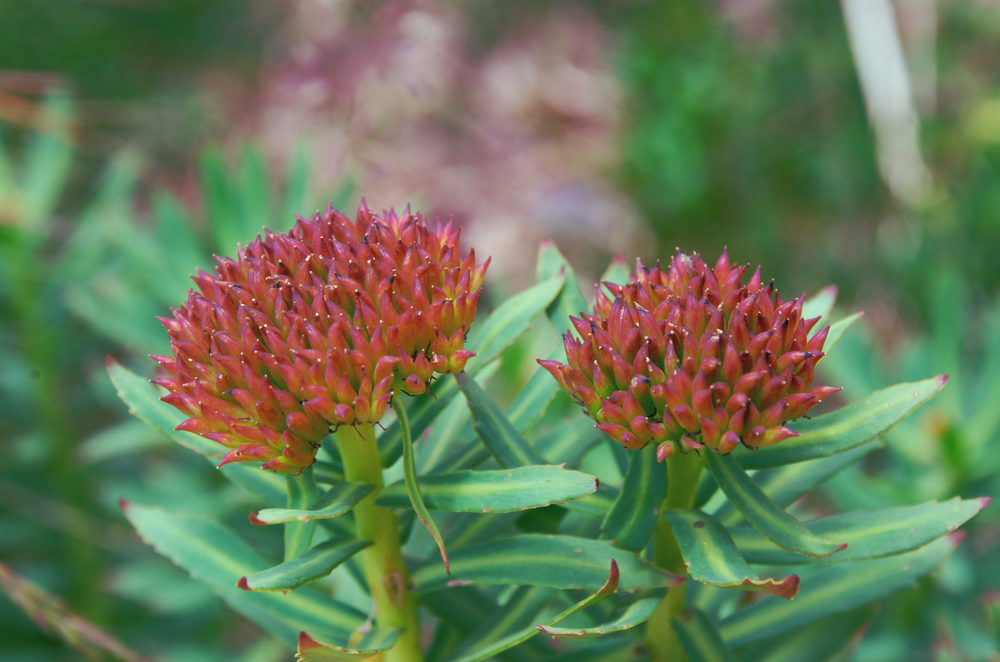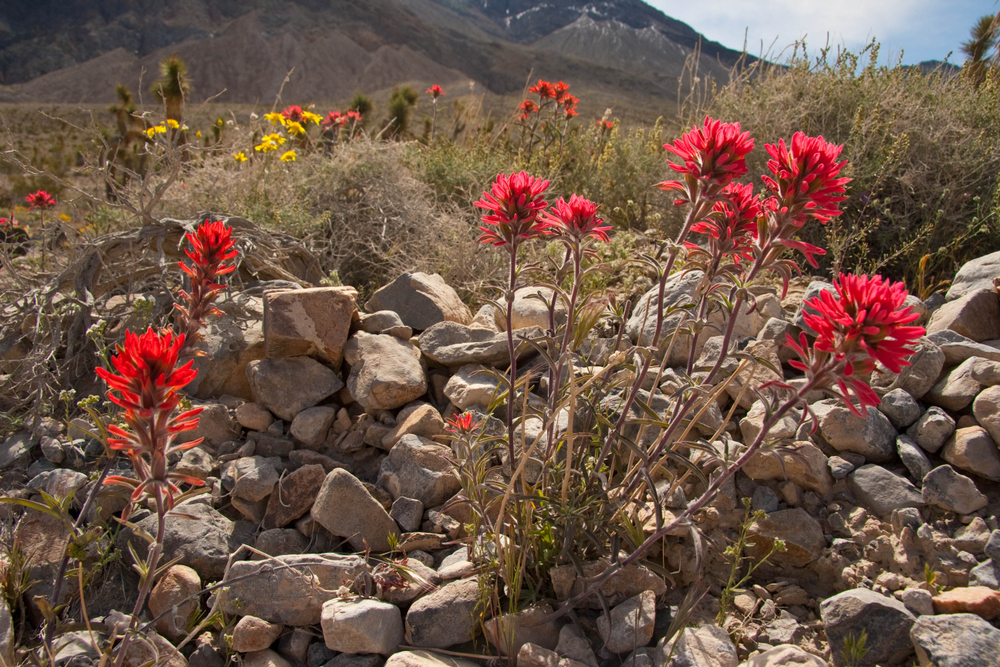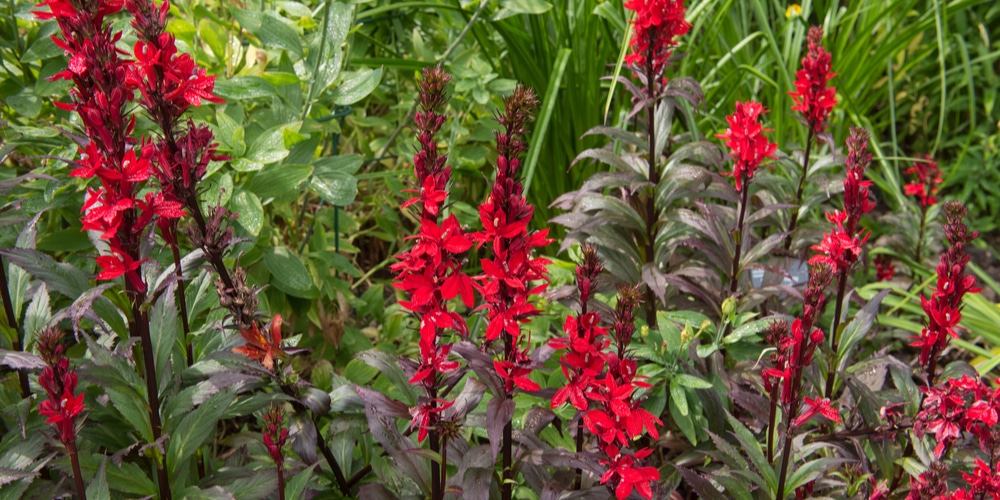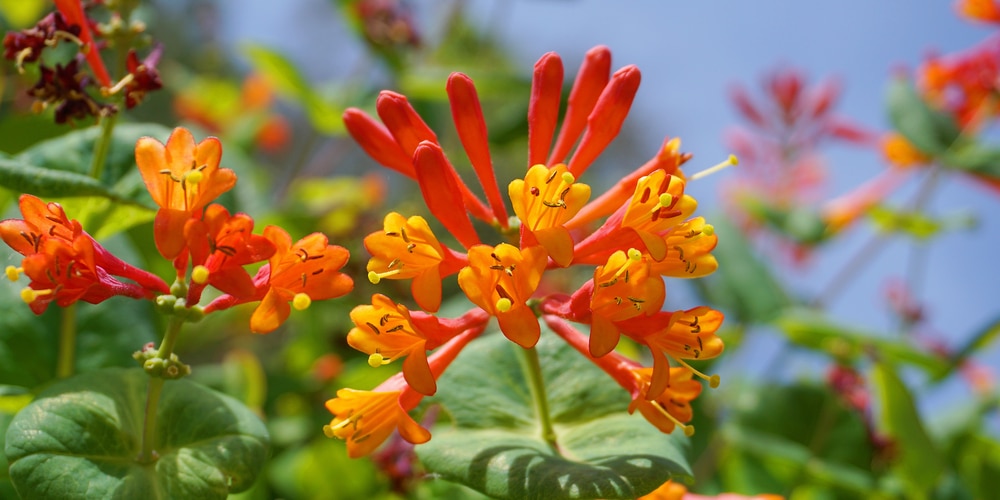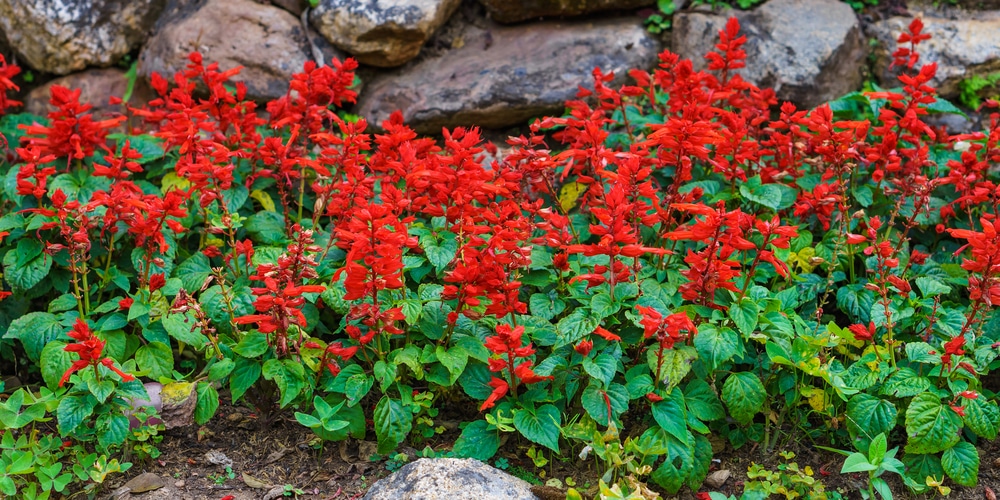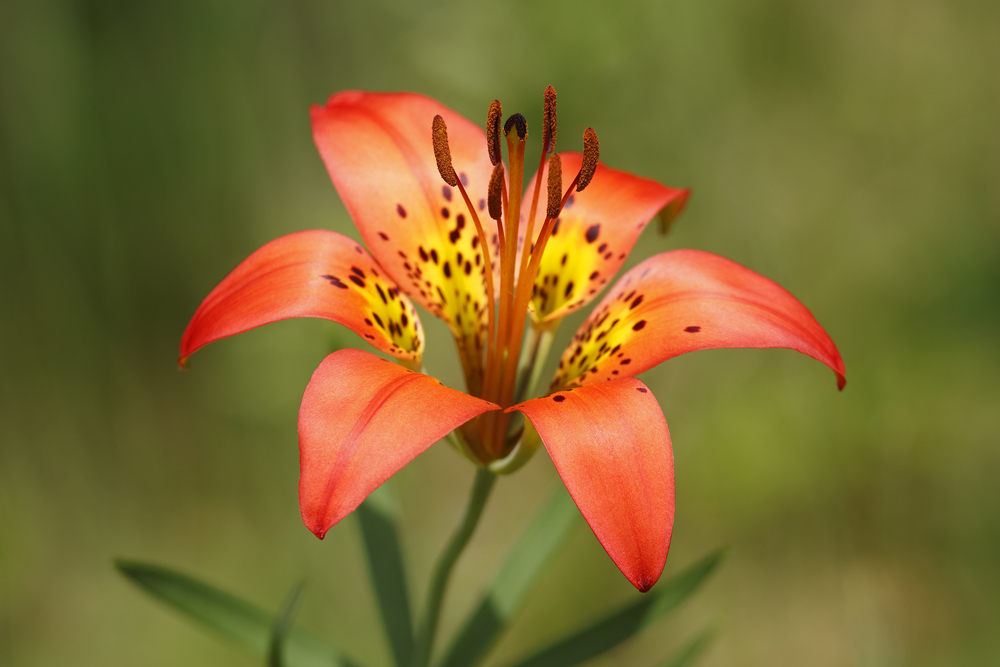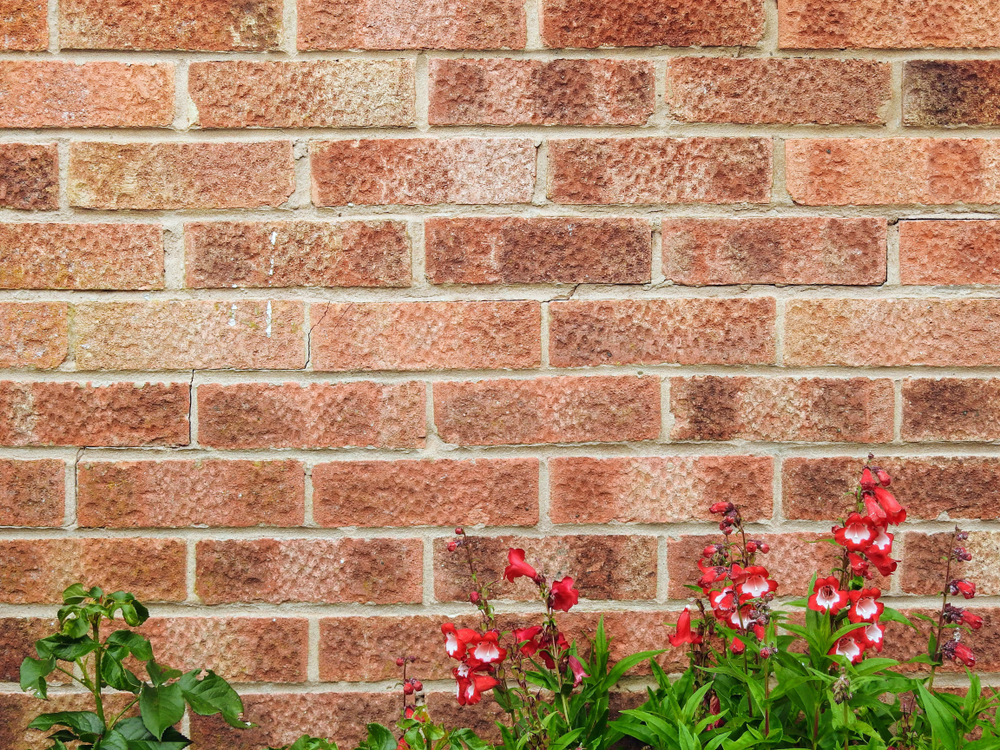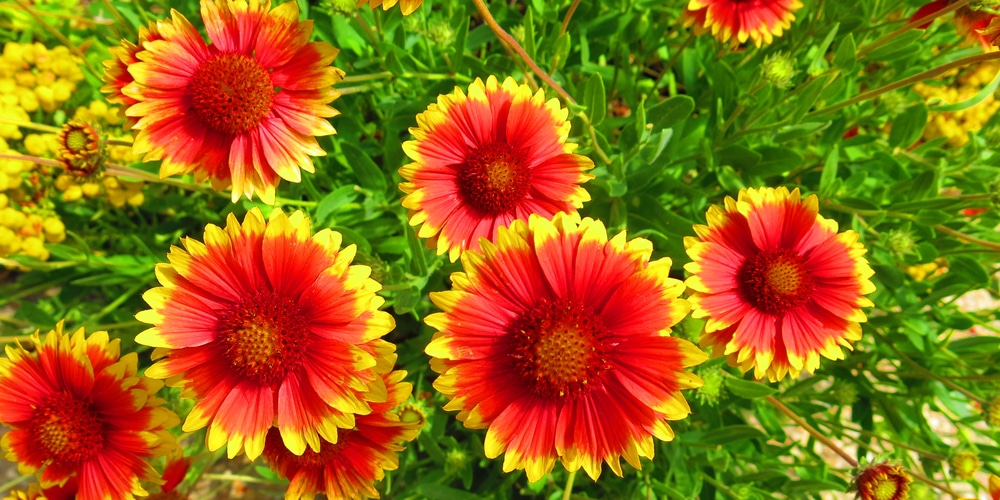Red wild flowers are beautiful, naturally occurring blooms that thrive in wild spaces. Coming across a red wild flower can be an exciting experience. You may even consider hosting some in your garden to encourage biodiversity and enhance the aesthetic appeal of your yard. Below is a list of some popular red wild flowers, their habitats, and their characteristics.
Western Scarlet Gilia
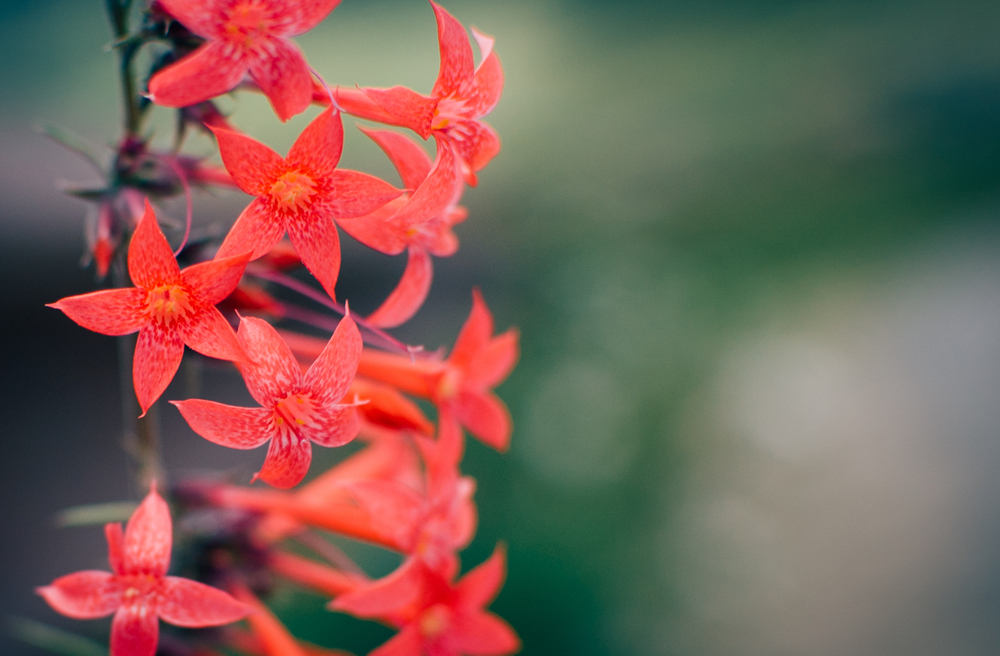
These bright red trumpet-shaped flowers grow directly from a vertical stem. This plant sports only a few leaves, and the flowers range in color from pink to red.
These flowers are found primarily in the west and southern regions, where the weather remains consistently dry. They prefer dry soil and partial shade, making the Rocky Mountains an ideal habitat. The flowers bloom in late summer to early fall.
King’s Crown
King’s crown is an incredible plant that sprouts clusters of deep red flowers atop a tall, vertical stem. The tiny flowers are so dense that they look like a single flower.
The Rocky Mountains are an ideal home for this plant, with plenty of afternoon sunshine. This plant loves the western states and rocky, moist environments, and you can find these flowers in bloom nearly all summer.
Indian Paintbrush
These tall, weedy flowers sport blooms that are spiky in appearance with long, pointed petals. It can grow up to two feet tall.
These flowers are tricky to garden and tend to do best in a natural environment. They prefer grasslands and clearings and lots of sun exposure. Well-draining soil is a must for these plants, which typically bloom from early to late spring.
Cardinal Flower
This vibrant flower is a tall-growing explosion of color. Clusters of thin, oblong flower petals make up the bloom. They sport clusters of leafy stems topped with tiers of tubular flowers. There are also white and pink versions of this bloom.
This plant is typically found in the east and prefers a moist habitat. In the wild, they often grow in wetlands. They need partial afternoon sun to thrive and bloom from mid to late summer.
Trumpet Honeysuckle
Trumpet honeysuckle, or coral honeysuckle, is a fascinating plant with eye-catching, conical flowers. Its attractive blossoms are the perfect shape for hummingbirds to dip their beaks in.
This fast-growing vine loves climbing fences and trees. It’s tolerant of several environments once it has been established but prefers regular watering. You can enjoy these flowers throughout most of the summer.
Tropical Sage
Tropical sage is a shrub that produces bright red clusters of tubular flowers on top of broad, green leaves. This perennial grows up to three feet in height.
In general, this plant does best in southern states with sandy soils. It loves partial shade and has a lengthy blooming period from spring to fall, sometimes longer depending on what zone it falls in.
Wood Lily
The wood lily is a distinctive plant with an attractive, cup-shaped blossom. Its symmetrical petals range from orange to red with long, vertical stamen.
This plant does best in dry, well-drained soils. They are commonly spotted in forest clearings and grassy prairies since they prefer full to partial sunlight. You can spot them in mid to late summer.
Scarlet Beardtongue
Scarlet beardtongue is a delicate flower that reaches high and tops out at roughly five to six feet. Red, conical flowers sprout directly from the stems.
From late spring to early summer, these plants percent orange and red blooms. They prefer sandy, well-drained soil, dry conditions, and full to partial sun. They are excellent garden foliage because the leaves are evergreen.
Blanketflower
Blanket flowers are enticing, red and yellow, similar to the daisy. The attractive blossoms grow in bushy clusters among dense, green leaves.
These plants are usually native to dry, hot climates and prefer full sun exposure, such as on prairies. The blossoms can range everywhere from white to orange to red or purple. They are known for their eye-catching fall colors and bloom summer through autumn.
Identifying Red Wild Flowers
Identifying wild flowers can be challenging unless you understand the intricacies of classifying flowers and foliage. They often look very similar, and the same flower can sometimes bloom in various colors. If you’ve discovered a red wild flower in your area, research it on your own, or ask an expert for further clarification on its species.
There are also many vines with red flowers that can be added to your yard.
